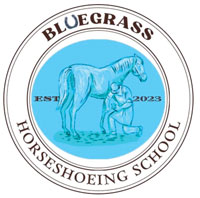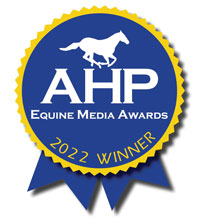Bluegrass Horseshoeing School to Open in 2024

More than 30 years ago, farrier Dan Helton, CJF, attended Jim Keith’s horseshoeing program at Tucumcari Vocational School in New Mexico. The lessons learned from the Hall of Fame farrier and blacksmith decades ago remained with Helton throughout his career. Today, Keith influences Helton, who will leave his farrier practice and operate a horseshoeing school like his mentor.
In early spring 2024, Helton will open the Bluegrass Horseshoeing School in Williamsburg, Ky., in the south-central part of the state.
Helton plans to offer classes at 12-, 16- and 24-week blocks. He believes that shorter 8-week courses end just as students begin to understand key concepts of farriery. The longer duration classes will add a deeper understanding for his graduates to prepare them for the workforce.
He plans to maintain a five-to-one student-to-teacher ratio. Helton is working on the curriculum, but says he will feature key building blocks, such as anatomy and forging. One portion of the curriculum he highlights is business. Helton believes this is an area that he can really aid students by sharing problems he encountered and mistakes he made through his 32-year career.
“I can offer different scenarios throughout my career,” he says, “whether it is how to deal with difficult clients or problematic horses.”
For more information on the Bluegrass Horseshoeing School, email bluegrasshorseshoeingschool@gmail.com or call (765) 227-7923.
American Farriers Journal Wins Industry Awards

American Farriers Journal’s coverage of the Horseracing Integrity and Safety Authority’s implementation of its horseshoeing rules earned two awards from the American Horse Publications’ Equine Media Awards on Saturday, June 24, 2023, in Tempe, Ariz.
AFJ’s entries collected first- and third-place honors during the annual event. “HISA Considers More Shoeing Rule Changes,” written by Jeff Cota, chronicled what a group of four United States senators called a “chaotic implementation” of the Racetrack Safety Program. HISA changed its shoeing rules multiple times en route to suspending enforcement of its traction rules for dirt races.
“You did a great job covering an important, breaking issue,” the AHP judge writes about the first-place winner in the News Reporting Related Feature Single Article category. “You have a crisp, clear writing style that clarifies the chaos of the rule changes.”
“HISA Can Restore its Credibility by Communicating,” also written by Cota, suggests that the organization would do well to improve its communications with members of the farrier industry — particularly the companies that manufacture the horseshoes it is regulating.
“Like its intro, this column is punchy and powerful,” the AHP judge writes about the third-place entry in the Personal Column Single Article category. “It makes a strong case with solid examples and sound research. Great from start to finish.”
A farrier-written book captured top honors in the Equine-related Non-Fiction Book category. Steve Kraus, director of the Cornell University Farrier Program, and Katie Navarra, both AFJ contributors, won first place for Shoeing the Modern Horse. Several AFJ images captured by Cota, Jeremy McGovern and Lewis Horn were included throughout the publication. The book is published by Trafalgar Square/Horse & Rider Books.
Pulling Back the Hoof-Care Curtain at the Haskell Stakes
Writer Sarah Bloom took Asbury Park Press readers behind the scenes before the Haskell Stakes as farriers Al Gomez, Steve Mara and trainer Elizabeth Dobles prepare their mounts at Monmouth Park Racetrack in Oceanport, N.J.
Bloom, the daughter of International Horseshoeing Hall of Fame member Steve Bloom, pulls back the curtain for the general public regarding the importance of hoof care in the health and performance of these equine athletes.
“The farrier I choose is based on people recommending them … so, if I ask one person and they give me one name and I ask three more people and they give me a different name, but all three people tell me the other name, I usually go with the most recommended farrier,” Dobles tells Bloom. “The other one might be a better farrier, but based on experience, somebody that is highly recommended, then they’re doing their best.”
Gomez, who has been shoeing horses for more than 20 years, takes the responsibility seriously.
“Especially when you’re shoeing the day of the race,” he says in the Asbury Park Press. “That horse needs to race that day, and you need to make sure it makes it to the race.”







Post a comment
Report Abusive Comment